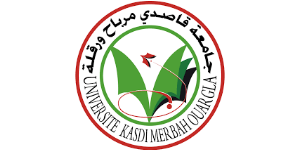Effet De Différents Modes De Séchage De Quelques Plantes Sahariennes À Caractère Médicinales Sur Leur Contenu Phénolique Et Leurs Activités Biologiques
Résumé: The present work deals with the contribution to optimizing the effect of several spontaneous plants with medicinal characteristics in the Algerian Sahara on the drying (free air, oven, solar dryer and lyophilization in comparison with the fresh plant) quantity and quality of some secondary metabolites. The determination of the yield of phenolic compounds showed the richness of the dry crude extracts in all the drying modes carried out and of varied color with respect to the fresh sample. There is therefore a positive effect of the drying of the different medicinal plants studied on the yields obtained. The best extraction yield of Asphodelus tenuifolius which amounts to 44.6% is obtained when the plant is dried in the open air. The solar dryer produced the best extraction yield of Calligonum comosum and Cotula cinerea, with values of 31.41% and 23.2% respectively. The contents of 2441.662 mg / ml of ascorbic acid; 7.812 mg / ml of gallic acid and 5.992 mg / ml of rutin are detected in Solar Dryer-Dried Calligonumn Comosum Extract. 3.469 mg / ml chlorogenic acid was also detected in parboiled Cotula cinerea. The extracts of Aristida pungens contain mostly caffeic acid (1.081mg / ml) and vanillin (4.601mg / ml). The maximum quercetin content of 289.432 mg / ml is detected in Haloxylon scoparium dried by a solar dryer. According to the HPLC analyzes, the different taxa investigated can be classified into two essential classes: one rich in polyphenols comprising Calligonumn comosum, Helianthemum lippii, Haloxylon scoparium, Cotula cinerea and Aristida pungens and the other rich in flavonoids including Oudneya africana, Calligonumn comosum, Helianthemum lippii and Haloxylon scoparium. It is noted that the solar dryer and the lyophilization make it possible to preserve the secondary metabolites existing in the plant species studied. Calligonumn comosum, Helianthemum lippii and Haloxylon scoparium can be classified as species rich in polyphenols and flavonoids compared to the other species investigated. Spectrophotometric assay of polyphenols, flavonoids and tannins revealed the presence of 0.96 mg EAG / g MS polyphenols in solar dried Oudneya africana and 0.057 mg EQ / g MS and 0.037 mg EAG / g MS in flavonoids and in tannins respectively at Calligonum comosum steamed. At the same time, solar drying also allows better extraction of flavonoids from Oudneya africana, Calligonum comosum, Aristida pungens, Helianthemum lippii and Asphodelus tenuifolius and better tannin extraction from Calligonum comosum, Haloxylon scoparium, Aristida pungens and Helianthemum lippii. The DPPH test. revealed the strong antioxidant activity of Calligonum comosum, Haloxylon scoparium and Aristida pungens when steamed or dried by solar dryers, the EC50 of their extracts ranged from 0.068 mg / ml in Haloxylon scoparium to 1.83 mg / ml in Cotula cinerea. This anti-free radical activity is related to the temperature of their desiccation not exceeding 45 ° C. The solar dryer and the steaming allow the preservation or even the increase of the antioxidant activity of the extracts of the majority of the investigated species, translated by the reduction of the EC 50. The solar dryer preserves the antibacterial activity of the majority of the species studied, particularly against the bacterial strains Gram positive (Staphylococcus aureus and Micrococcus luteus). However, these extracts are less effective against Gram-negative strains (Pseudomonas aeruginosa and Escherichia coli). The best zones of inhibition are found in contact with the extracts of Retama retam and Calligonum comosum dried according to different modes and the extract of Oudneya africana dried in an oven. According to the correlation test applied to the samples studied, it is noted that there is a positive correlation between the concentration of the extract and the diameters of the zones of inhibition obtained in the presence of most of the extracts analyzed. From the various results obtained, it can be concluded that the solar dryer and the oven seem to be the most preservative of the phenolic compounds and the biological activities of all the plant species investigated.
Mots-clès:
Nos services universitaires et académiques
Thèses-Algérie vous propose ses divers services d’édition: mise en page, révision, correction, traduction, analyse du plagiat, ainsi que la réalisation des supports graphiques et de présentation (Slideshows).
Obtenez dès à présent et en toute facilité votre devis gratuit et une estimation de la durée de réalisation et bénéficiez d'une qualité de travail irréprochable et d'un temps de livraison imbattable!


